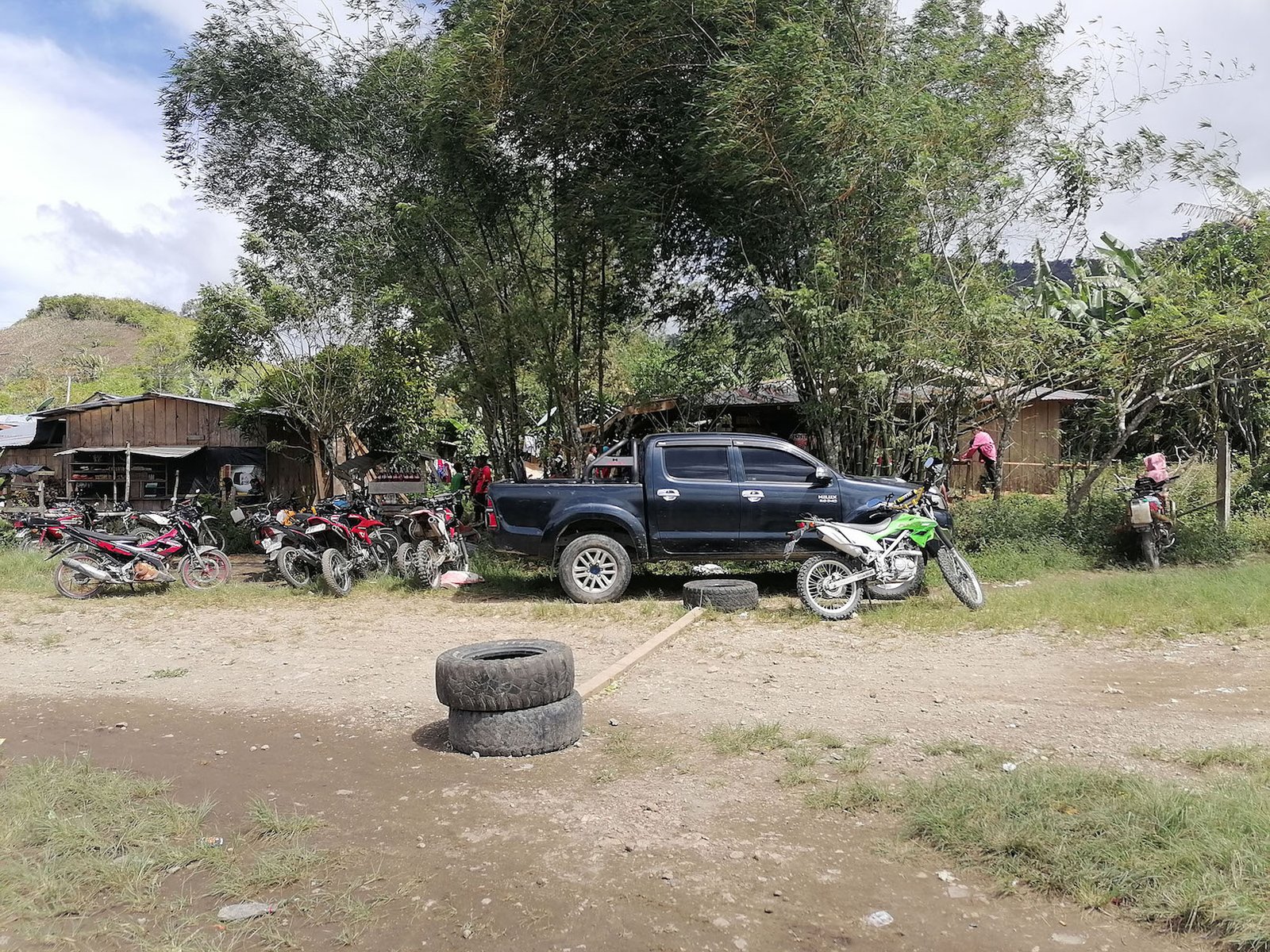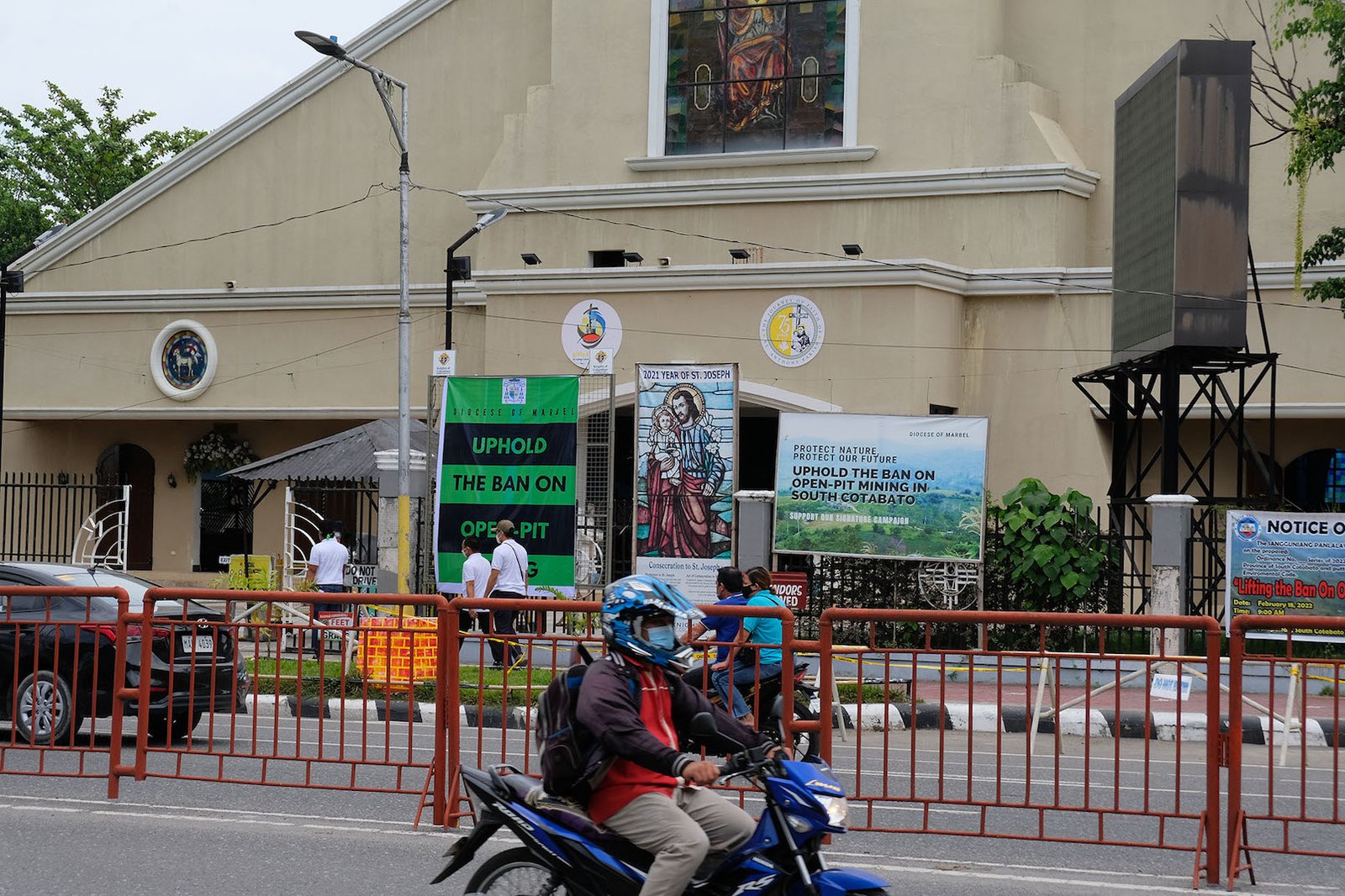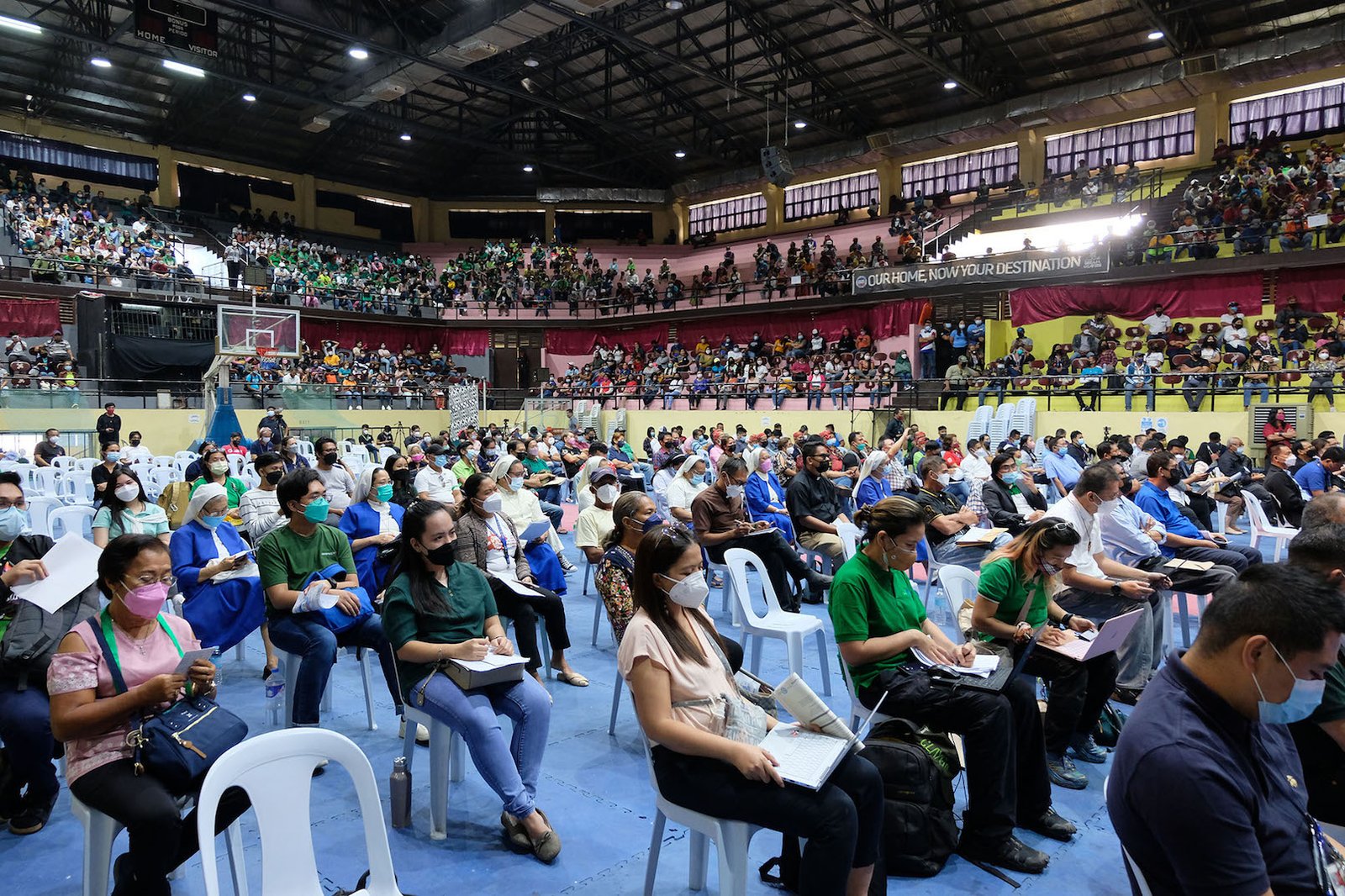- An organized $5.9 billion copper and cash cow in the southern Philippines has actually dealt with opposition given that reserves were initially verified in the 1990s, with more than 2 lots individuals eliminated ever since in disputes associating with the job.
- A lot of impacted by the dispute are the Native Blaan; the prepared mine job extends throughout the ancestral lands of 5 tribal councils, and will need the expulsion of around 5,000 individuals
- For years, clans and even households have actually been divided over their opposition or assistance for the mining business, which has actually guaranteed to support education, health, income and advancement tasks in impacted neighborhoods.
- With the nationwide federal government in Manila pressing pro-mining policies to jump-start the pandemic-hit economy, and as pressure installs within households and neighborhoods, a few of the mine’s staunchest challengers are reevaluating their position.
TAMPAKAN, Philippines- For almost a years, Nora Sukal was the general public face of Native opposition to the Tampakan job, an organized gold and copper mine on Blaan tribal land in Mindanao in the southern Philippines.
” The proposed copper and gold open-pit mining job within our ancestral domains presents severe threats to our survival as a people,” Sukal stated in an oral declaration at the 32 nd U.N. Person Rights Council in June 2016. “The visit of people who are not genuine to represent our neighborhood triggered disputes and divides us. The variation amongst us people led to disunity which gradually ruins our culture of oneness.”
Sukal, who is amongst the leaders in the ancestral domain straddled by the S’bangken Tribal Council, stated that the mine, run by Sagittarius Mines, Inc. (SMI), and promoted as the biggest undeveloped copper and gold reserve in Southeast Asia, would have alarming influence on her people. Around 5,000 individuals would need to be transferred to give way for the $5.9 billion job, which, she stated, would keep the Blaan far from the forest- their source of food when they are starving, or medication when they are ill, and their spiritual ground to commune or applaud their gods.
In early February, nevertheless, when Mongabay checked out Sukal in her clan’s ancestral domain in the hamlet of Datal Mangisi, she dropped a bombshell.
” I now state I am pro-mining. I will support the operations of SMI,” Sukal stated in the vernacular.
” The majority of my loved ones have actually been supporting the mining endeavor and I saw their joy each time they got monetary assistance from the business, consisting of scholarships to the youth, even if the company has yet to start the real extraction of the minerals,” she stated.
Sukal price quotes that about 90% of land in her neighborhood’s ancestral domain has actually been rented by the landowners to SMI. This consists of land coming from the relative in whose house Mongabay fulfilled her. He had actually accepted rent his land to the mining business for 25 years for an overall of 160,000 pesos (about $3,100), and was waiting on extraction to start to gather the next tranche of his lease payment.
” I might no longer stand to be thorn in the quote of my fellow tribal members to acquire windfall from the mining job,” Sukal stated. “If I continue my anti-mining project, the lease cash still due to my brother or sisters and other fellow tribal members may be kept.”

Winds of modification
Sukal is not the only anti-mining voice to sing a various tune. After years of dispute that has actually fractured households and clans and resulted in the deaths of a minimum of 2 lots individuals, the Tampakan mine now appears closer than ever to reaching industrial production, thanks to tiredness at the regional level and a pro-mining shift in Manila.
In 1994, mineral reserves were initially verified in the location, which depends on the ancestral domain of the Blaan, a hill individuals who are understood for their searching abilities and who think about the forests spiritual locations. In 1995, mining rights were approved to Australian company Western Mining Corp., which in turn offered the rights to Sagittarius Mines, Inc. in 2001.
Given that its creation, the mining job dealt with stiff opposition from the Blaan and the regional Catholic Church due to issues about the environment and displacement of tribal neighborhoods. Farmers and irrigators in the location have actually likewise revealed worries they might lose their incomes if the supply of water is decreased or polluted as an outcome of the mine.
The Tampakan job’s proposed last mine location (FMA) has to do with 10,000 hectares (almost 25,000 acres), of which about 6,000 hectares (almost 15,000 acres) are currently disrupted due to logging, farming and kaingin (slash-and-burn) farming. According to the company’s initial strategy, about 4,000 hectares (almost 10,000 acres) of the concession location will be disrupted by the mine, of which roughly 1,300 hectares (3,200 acres) is forested.
The very first blood was shed over the mine even prior to the job was officially introduced. In July 2002, tribal clan leader Gurilmin Malid, 38, and his small buddy passed away on the area after they were supposedly assailed within the mine’s advancement website. The military later declared the victims, who were ordinary volunteers, were outlaws eliminated in a genuine military operation. Catholic spiritual leaders hailed Malid as “a brave tribal leader” protecting his land from the hazards of mining.
Ever Since, a minimum of 2 lots people have actually been eliminated within the Tampakan mining tenement, consisting of numerous security workers worked with by the company, and Native kids eliminated in actions referred to as “genuine military operations.”
The location around the mine is awash with guns. The Blaan typically bring bladed weapons, however in the mid-2000s started equipping themselves with high-powered guns such as M-14 military rifles to eliminate the business’s existence within their ancestral lands, fearing the damage of their spiritual forests and their dislocation from their neighborhoods.
Intensifying the security circumstance is the existence in the location of the New Individuals’s Army, the armed wing of the Communist Celebration of the Philippines, which is categorized as a terrorist group by the Philippine and United States federal government. On New Year’s Day 2008, about 40 of its greatly armed fighters stormed and burned SMI’s base camp on the borders of the town of Tampakan.
Given that the Tampakan job was formally introduced in January 2003, different systems of the Philippine armed force have actually been released as counterinsurgency forces to the location, which is likewise safeguarded by an armed paramilitary detachment developed partially to secure personal financial investments in the location, and security professionals worked with by SMI.
On The Other Hand, as SMI is still not able to start drawing out ore, unlawful miners- likewise supposedly armed and hazardous- are beating the business to the gold deposits utilizing the extremely devastating sluice mining technique, which includes removing ore-bearing rocks with high-pressure water jets and utilizing mercury to separate out the gold.

Internal departments
While the mine has actually dealt with dissent from the start, it likewise has fans amongst tribal neighborhoods. Even prior to starting extraction, SMI has actually supplied 3 million pesos (almost $59,000) every year to each of 5 tribal councils for scholarships, health, income and advancement efforts in their neighborhoods.
After Gurilmin Malid was eliminated in July 2002, he was been successful as tribal chieftain by his bro Juanito, now residing in the hamlet of Salnaong in Columbio, a town adjoining with Tampakan and within the mining tenement location.
7 months after SMI formally introduced the job, and 14 months after Gurilmin was eliminated, Juanito altered the clan’s position from anti- to pro-mining, permitting the company to carry out unhampered expedition activities on their ancestral land in exchange for advancement tasks in their tribal neighborhood.
Yet even for neighborhoods that have actually supported the job, things have not constantly run efficiently.
Mongabay talked to Juanito on Feb. 6 in his neighborhood, a hamlet with treacherous rocky roadways available by motorbike, where he suggested his dissatisfaction with the business for what he called damaged pledges.
” There were lots of pledges from the business that were not satisfied, consisting of support for the building of our real estate and tribal hall, university hospital with medical professional and others to boost our lives,” he stated in the still noticeably impoverished neighborhood.
Juanito, who was just recently changed as the Salnaong tribal council chieftain after nearly twenty years by another brother or sister, stated a few of the obligation lies with the tribal council. He stated the council has a hard time to manage documentation and stopped working to follow up with the business about its pledges.
In Other Places in the Tampakan mining tenement, hardship amongst the tribal homeowners stays widespread regardless of the existence of SMI, which states it has actually contributed billions of pesos in taxes and other financial activities in the 2 years given that introducing the job.
Throughout a provincial legal hearing in December 2021, SMI representative Roy Antonio stated the business now prepares to lower effect by mining in stages instead of in “one huge mining scoop,” and will “utilize accountable mining practices.”
Up until now, Antonio stated, the business has actually invested 32 billion pesos ($ 626 million) and paid 2.6 billion pesos ($ 50.9 million) in taxes to the federal government. In the very first ten years after operations start, throughout which time the business prepares to develop assistance facilities and begin extraction, it forecasts paying 76.6 billion pesos ($ 1.5 billion) in taxes to the nationwide federal government and 4.8 billion pesos ($ 93.9 million) to city governments. Throughout this duration, Native individuals stand to get 6.6 billion pesos ($ 129.2 million) in mining royalties, comparable to 1% of gross business profits, Antonio included.

Continuing opposition
Opposition to the job stays strong, led by the regional Catholic Church, and highly supported by ecological and civic groups in addition to some tribal members.
A Church-led signature project introduced in August 2021 has actually collected more than 93,000 signatures in assistance of preserving a restriction on open-pit mining in South Cotobato province, where Tampakan lies. Throughout a Feb. 24 public hearing on the restriction in the provincial capital of Koronadal City, the crowd of 3,300 participants was extremely made up of individuals contacting us to keep the restriction on open-pit mining.
The Tampakan job has likewise, till just recently, dealt with obstacles at the nationwide level. In 2017, Gina Lopez, the environment secretary at the time, enforced an across the country restriction on open-pit mining. Lopez likewise canceled ecological compliance certificates (ECC), which are needed for ecologically delicate tasks to advance to industrial operations, for SMI and numerous other business. Lopez was changed as environment secretary in Might 2017; she passed away of cancer-related problems in 2019.
Philippine President Rodrigo Duterte, who designated and later on dismissed Lopez, backed her anti-mining position till April 2021, when he signed an order raising the moratorium on brand-new mining contracts to stimulate financial development in the nation. He validated the relocation as remaining in line with the nationwide federal government’s action to recuperate from the incapacitating financial effect of the COVID-19 pandemic.
At the regional level, regardless of the rift brought by the Tampakan job, the 5 tribal councils within the tenement location have actually asked worried federal government companies to enable the mining job to move on.
In October 2020, the Tampakan job was approved what’s referred to as accreditation prerequisite by the National Commission on Indigenous Peoples. This licenses that the Native cultural neighborhoods have actually offered their grant the mining endeavor within their ancestral domain, which the business has actually complied sufficiently with the procedure of complimentary, previous and educated authorization (FPIC). Anti-mining supporters knocked this advancement, stating the procedure stopped working to attain large multi-stakeholder assessment.
The mine job cleared another barrier in December 2021, when Environment Secretary Roy Cimatu, who was successful Lopez, raised his predecessor’s four-year-old restriction on open-pit mining of copper, gold, silver and complex ores.

Not all smooth cruising
Another tribal leader, nevertheless, is enjoying with safeguarded care the advancements in the Tampakan mining tenement.
Daguil Capion, based in the Bong Mal neighborhood, stated any error by the business might restore the tempest that brewed in the past in the restive mineral-rich mountains. However Capion’s own position now towards SMI is difficult to specify- not least since he got legal support from the business in a case he dealt with years back.
Capion led a band of armed tribesmen that combated the mining company more than a years back, and declared obligation for the 2010 killing of 3 employees utilized by a roadway professional for SMI. In 2012, while Capion remained in hiding, security forces who were trying to find him eliminated his partner and 2 of his kids. Capion’s bro was likewise eliminated throughout an encounter with federal government soldiers in 2013.
Capion- who, showing the intricacies of clan politics, relates to Dot Capion, a tribal chieftain who is a strong advocate of the Tampakan job- was lastly apprehended in 2015. However the numerous cases of murder and tried murder submitted versus him and numerous others were dismissed the list below year due to inadequate proof, launching him from prison.
SMI has actually been carrying out land and crop studies given that in 2015 in Bong Mal, Capion’s neighborhood, which is now revealing indications of development- more homes constructed of light products, mom-and-pop shops, web gain access to, electrical home appliances running the recently set up lines, and a barber store- although in basic the population stays in hardship.
In contrast to Sukal’s neighborhood, where about 90% of the land has actually supposedly been rented to the mining business, Capion stated that in Bong Mal, “just 10% has actually been leased to the company up until now,” with a minimum of 200 hectares (494 acres), according to him, under settlement in between the landowners and the business.
Capion stated the tribal members in his neighborhood do not desire open-pit mining in their ancestral location, however that Environment Secretary Cimatu’s lifting of the restriction has actually put them in a bind.
As a leader of his tribal neighborhood, Capion stated he still does not support SMI. He included he is acutely observing the advancements and still considers himself an ally of the regional Catholic Church, which from the start combated the Tampakan job, and which has actually sworn to continue its opposition to open-pit mining.
” Our armed resistance versus the mining business may occur once again if the people is terribly dealt with,” Capion informed Mongabay, including that “such will occur if dialogs will not work.”

Banner image: In January 2020, a resident maneuvers a motorcycle along a dirt roadway near the Tampakan job location, by Bong S. Sarmiento.
FEEDBACK: Utilize this kind to send out a message to the author of this post. If you wish to publish a public remark, you can do that at the bottom of the page.













